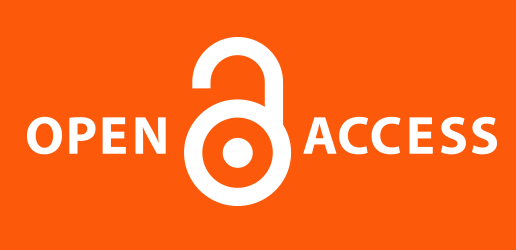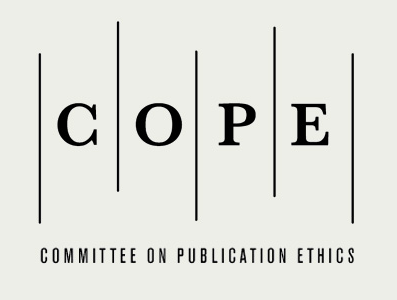Вештачка интелигенција у настави страних језика: евалуација поузданости великих језичких модела са фокусом на српском језику као страном
Данијела Д. Врањеш, Универзитет у Београду, Филолошки факултет, Београд, Србија, имејл: danijellavranjes@gmail.com
Војкан Б. Стојичић, Универзитет у Београду, Филолошки факултет, Београд, Србија
Иновације у настави, XXXVIII, 2025/2, стр. 96–110
| PDF | | Extended summary PDF |
DOI: 10.5937/inovacije2502096V
Резиме: У учењу страног језика језичка компетенција на Ц2 нивоу подразумева, између осталог, и разумевање дијалектизама, фразеологизама, идиома, изрека и гнома. Циљ овог рада је да се истраже могућности за употребу вештачке интелигенције у настави страног језика на вишим нивоима, на примеру српског језика као страног. За потребе истраживања коришћена су три велика језичка модела (Claude, ChatGPT и Gemini). У језичке моделе унета су три текста различите тежине, написана на дијалектима српског језика, а од језичких модела је затражено да се текстови преведу на стандардни српски језик. Узорак истраживања чинило је 113 испитаника – нефилолога, наставника страних језика и наставника српског као матерњег или као страног језика. За потребе истраживања коришћени инструмент био је анонимни упитник, који је креиран на страници Гугл формс (енг. Google Forms), а оцењивачима је достављан мејлом, односно преко канала и профила на друштвеним мрежама. На основу унапред дефинисане листе критеријума учесници истраживања процењивали су квалитет текстова, не знајући да је текстове преводила вештачка интелигенција. За обраду добијених статистичких података коришћене су технике дескриптивне статистике, као и једносмерна АНОВА са пост-хок тестовима (Бонферонијев тест). Резултати истраживања указују на то да се Claude и ChatGPT могу сматрати поузданим при интерпретацији дијалекатских текстова. Када је у питању лексичка тачност текста, текстови генерисани помоћу ова два алата процењени су као веома поуздани, те могу олакшати ученицима разумевање дијалектизама, али и фразеологизама, идиома и изрека у српском језику. На основу добијених резултата у раду су понуђене дидактичке импликације за употребу вештачке интелигенције у настави страних језика.
Кључне речи: глотодидактика, велики језички модели, вештачка интелигенција у настави, ChatGPT у настави, српски језик као страни
Summary: In foreign language teaching, language competence implies, among other things, understanding dialectisms, phraseology, idioms, proverbs, and gnomes. The aim of this paper is to explore the possibilities of using artificial intelligence at higher levels of foreign language teaching, using Serbian as an exemplary foreign language. Three large language models (Claude, ChatGPT, and Gemini) were used for the purposes of this research. Three texts of a different level of difficulty, and written in different Serbian language dialects, were entered into the three language models, and the language models were asked to translate the texts into the standard Serbian language. The research sample consisted of 113 respondents – non-philologists, foreign language teachers, and teachers of Serbian as a mother tongue or a foreign language. An anonimous questionnaire, created on Google Forms, was the research instrument and it was distributed to the evaluators via email, i.e., to their channels and profiles on social networks. Based on a predefined list of criteria, the research participants had to evaluate the quality of the texts, without knowing that the texts were translated by artificial intelligence. Descriptive statistics techniques were used to process the obtained statistical data, as well as the one-way ANOVA with post-hoc tests (Bonferroni test). The research results indicate that Claude and ChatGPT can be considered reliable in translating texts written in dialects. When it comes to the lexical accuracy of the texts, the texts generated using these two tools were evaluated as very reliable, making it easier for students to understand dialects, phraseology, idioms, and proverbs in Serbian language. Based on the obtained results, the paper offers didactical implications for using artificial intelligence in foreign language teaching.
Кeywords: glottodidactics, large language models, artificial intelligence in teaching, ChatGPT in teaching, Serbian as a foreign language
Литература:
- Anthropic, About Claude, https://support.anthropic.com/en/collections/4078530-about-claude •• Atlas, S. (2023). ChatGPT for higher education and professional development: A guide to conversational AI. University of Rhode Island. https://digitalcommons.uri.edu/cba_facpubs/548?utm_source=digitalcommons.uri.edu%2Fcba_facpubs%2F548&utm_medium=PDF&utm_campaign=PDFCoverPages
- Baković, J. (2023). Izazovi primene veštačke inteligencije u obrazovnom sistemu Srbije. (neobjavljeni master rad). Ekonomski fakultet Univerziteta u Beogradu. https://phaidrabg.bg.ac.rs/open/o:33111
- Chiu, T. K. (2022). Creation and Evaluation of a Pretertiary Artificial Intelligence (AI) Curriculum. IEEE Transactions on Education, 65(1), 30–39.
- Institut za moderno obrazovanje (n. d.). Uloga veštačke inteligencije u unapređenju nastave. https://www.institut.edu.rs/uloga-vestacke-inteligencije-u-unapredjenju-nastave/
- Ka Yuk Chan, C., & Colloton, T. (2024). Generative AI in Higher Education: The ChatGPT Effect. Routledge.
- Krajišnik, V., Marinković, N., Strižak, N., & Nikolić, B. (2022). Deskriptori za polaganje sertifikacionog ispita za nivo A2. Filološki fakultet. http://www.learnserbian.fil.bg.ac.rs/files/description/C2%20level%20description%20-%20Serbian.pdf
- Kuleto, V., Mihoreanu, L., & Dinu, D. G. (2023). Eksploatacija veštačke inteligencije u visokom obrazovanju: Uloga ChatGPT-ja prema Uneskovom izveštaju. Journal for Contemporary Education – InspirED Teachers’ Voice, 26–32.
- Luknar, I. (2024). Veštačka inteligencija kao izazov. Napredak, 5(2), 19–28.
- Luknar, I., & Jovanović, F. (2023). Veštačka inteligencija: izazovi i mogućnosti. U Zbornik radova sa 29. IKT konferencije „YU INFO 2023” (str. 41–45). Informaciono društvo Srbije. https://www.researchgate.net/publication/374617497_Vestacka_inteligencija_izazovi_i_mogucnosti_Artificial_Intelligence_Challenges_and_Possibilities
- Lynch, M. (2019). 26 Ways That Artificial Intelligence (AI) is Transforming Education for the Better. https://www.theedadvocate.org/26-ways-that-artificial-intelligence-ai-is-transforming-education-for-the-better/
- McCarthy, J. (2007). What is Artificial Intelligence? https://www-formal.stanford.edu/jmc/whatisai.pdf
- Mollick, E. (2024). Co-Intelligence. Living and Working with AI. Portfolio/Penguin.
- Mrnjaus, K., Vrcelj, S., & Kušić, S. (2023). Umjetna inteligencija i obrazovanje: Suparnici ili saveznici? JAHR, 14(2), 431–447.
- Nikolić, T., Koruga, N. i Bulajić, A. (2025). Perspektive celoživotnog učenja u digitalnom okruženju. Inovacije u nastavi, 38(1), 89–105. https://doi.org/10.5937/inovacije2501089N
- Pokimica, J., & Sinkovich, L. (2025). A Scoping Review of Recent Developments Linking Artificial Intelligence and Lifelong Learning. Inovacije u nastavi, 38(1), 46–58. https://doi.org/10.5937/inovacije2501046P
- Prieto Ramos, F., & Guzmán, D. (2024). The impact of specialised translator training and professional experience on legal translation quality assurance: an empirical study of revision performance. The Interpreter and Translator Trainer, 2, 313–337. https://doi.org/10.1080/1750399X.2024.2344948
- Stanić, M., & Stanić, T. (2023). Uticaj veštačke inteligencije na obrazovanje. U M. Stanišić (ur.). Zbornik radova sa XXIV naučnog skupa sa međunarodnim učešćem SINERGIJA 2023 „Vještačka inteligencija: Inovacija, primjena i etički izazovi” (str. 41–47). Univerzitet Sinergija. https://naucniskup.sinergija.edu.ba/wp-content/uploads/2024/02/Zbornik-2023.pdf
- Stefanović, M., Havzi, S., Lolić, T., Janković, A., & Dakić, D. (2021). Pregled mogućnosti upotrebe veštačke inteligencije u obrazovanju. U V. Katić (ur.). XXVII Skup trendovi razvoja: „on-line nastava na univerzitetima” (str. 284–287). Fakultet tehničkih nauka UNS. http://www.trend.uns.ac.rs/stskup/trend_2021/radovi/T2.2/T2.2-1.pdf
- Strategija razvoja veštačke inteligencije u Republici Srbiji za period 2020–2025. godine (2019). Vlada Republike Srbije. https://www.srbija.gov.rs/tekst/437277
- Su, J., & Zhong, Y. (2022). Artificial Intelligence (AI) in early childhood education: Curriculum design and future directions. U Computers and Education: Artificial Intelligence 3. Elsevier. https://doi.org/10.1016/j.caeai.2022.100072
- Swargiary, K. (2024). Embracing AI in education: A guide for teachers. Lambert Academic Publishing.
- Volarić, T., & Crnokić, V. (2022). Umjetna inteligencija u obrazovanju i robotici. Stomatološki fakultet Sarajevo.
- Vranješ, D., & Kocevska, D. (2024). Primena IKT i alata veštačke inteligencije u nastavi. Trening centar Kocevski.
- Γαβριηλίδου, Ζ. (2024). Διδάσκοντας και μαθαίνοντας γλώσσα με το ChatGPT. Εκδόσεις Κριτική.
Извори:
- Brzak, D., i Sremac, S. (2011). Ivkova slava. Muzej pozorišne umetnosti Srbije.
•• Mihailović, D. (2016). Petrijin venac. Laguna.
•• Sremac, S. (1981). Zona Zamfirova. Nolit.
Copyright © 2025 by the publisher Faculty of Education, University of Belgrade, SERBIA. This is an open access article distributed under the terms of the Creative Commons Attribution License (CC BY 4.0) (https://creativecommons.org/licenses/by/4.0/), which permits unrestricted use, distribution, and reproduction in any medium, provided the original paper is accurately cited.





